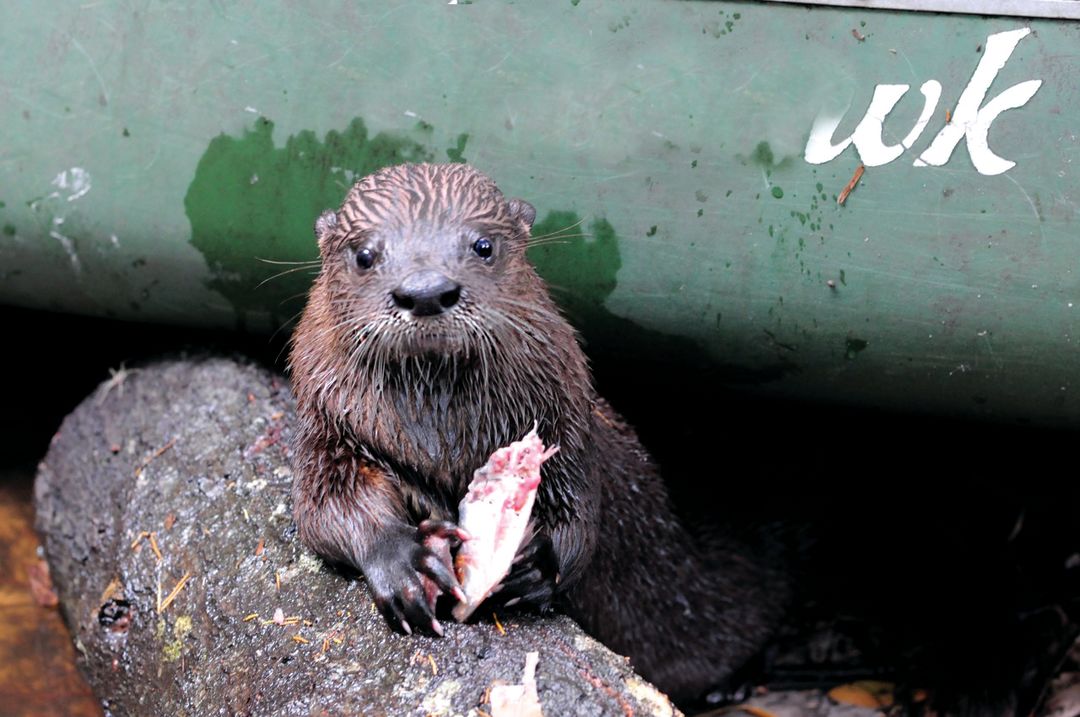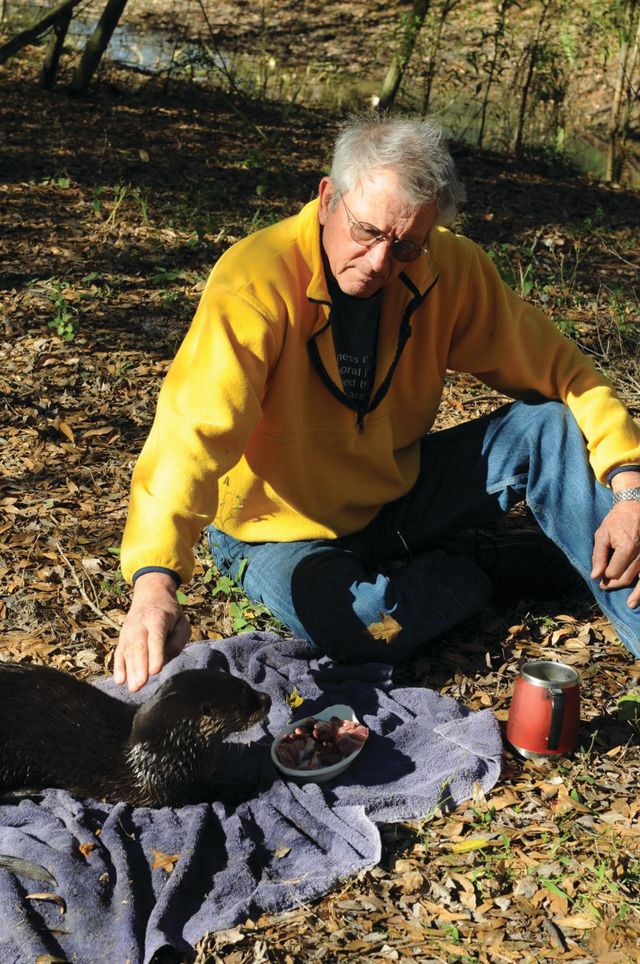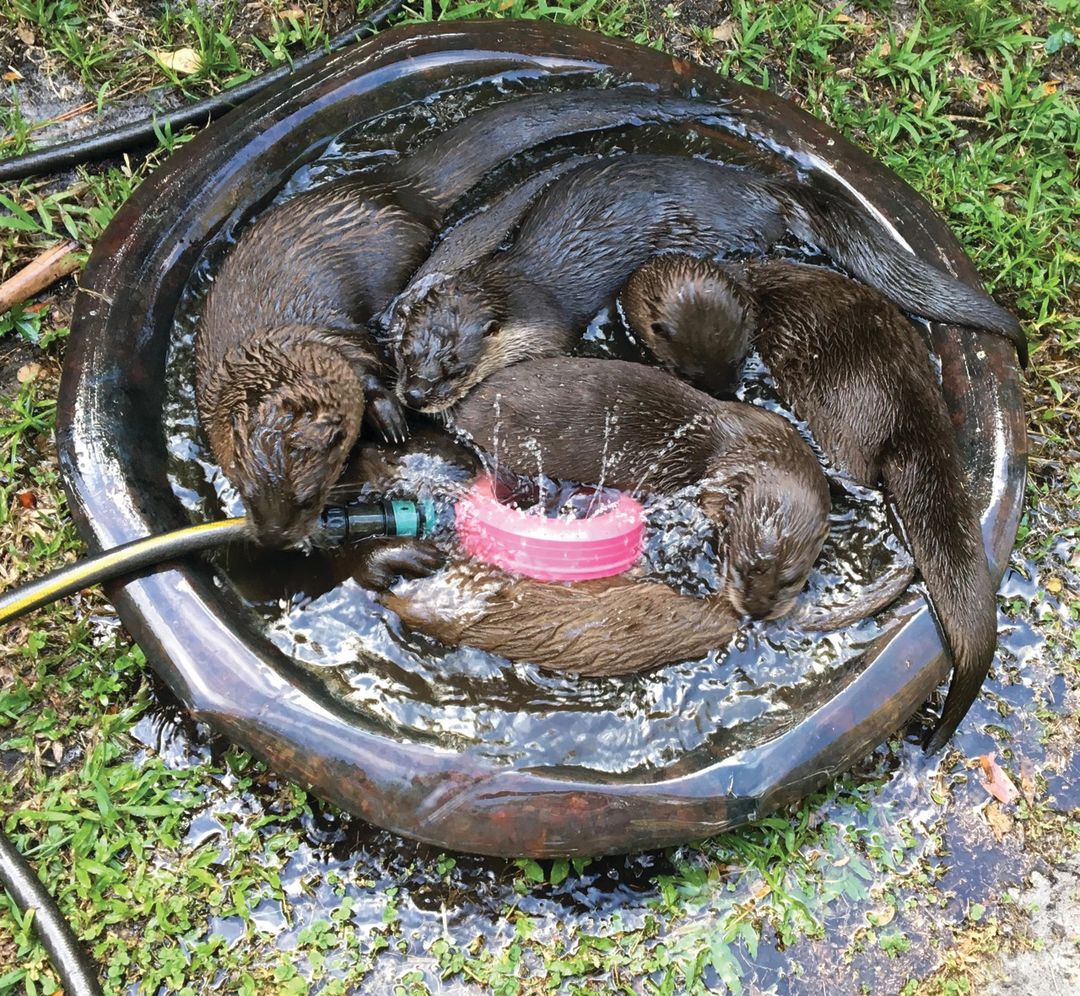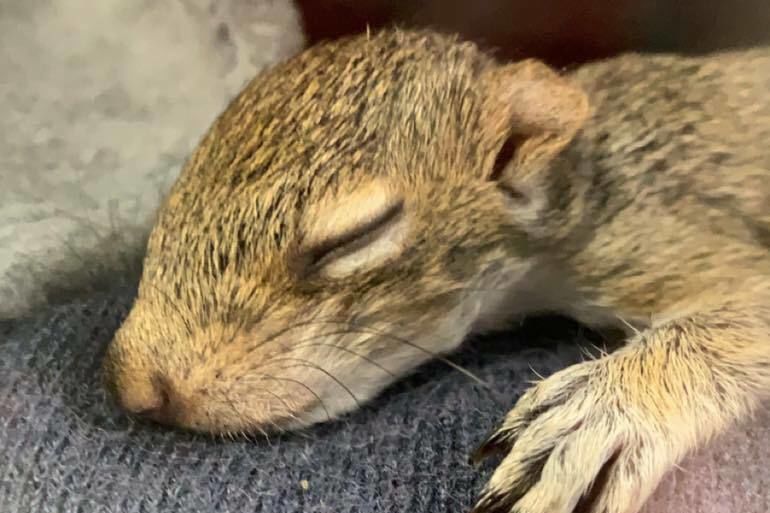A Myakka Couple Rehabilitate Orphaned Otters

An otter chows down on fish.
Image: Jean Blackburn
When a river otter attacked kayakers on the Braden River in early March, the news made national headlines. “Woman, Fearing for Her Life, Battles Animal With Paddle,” proclaimed a USA Today headline. But are adorable otters that vicious? We asked retired attorney and former Marine Steven Schaefer and his wife, artist Jean Blackburn, who have rehabbed more than 20 otter orphans at their Myakka home.
Otters are not pets. “I can’t emphasize this enough,” Schaefer says. “They’re stub-born, single-minded, inquisitive and strong, and they’re not loyal.” They’re also competitive when they eat, and if you try to push them away, “They’ll come back at you.”
They seem to like some pets. Schaefer says their first otter, Maxwell, brought home a feral black cat. “We had a border collie, too, so I’d sit on the steps and give the otter a fish, the cat a fish and the dog a fish, and the three of them ate together.” (Other otter orphans have played well with their cats, too.)

Steven Schaefer with one of the orphans at his Myakka property
Image: Jean Blackburn
They’re social. Maxwell once broke through the couple’s screen door, meandered through the house and climbed into bed with Blackburn, begging for food. “I woke up to Jean screaming,” Schaefer says. These days they have thick plexiglass panels around the bottom of their screen doors to prevent similar surprises, but Blackburn says she’ll still sometimes look at the door and see a furry little face peeking in.
You need a license to rehab otters. Schaefer and Blackburn got into otter rehabilitation through Wildlife Inc., which is licensed through the Florida Wildlife Commission. They’ve taken in otters from all over the state, including Jacksonville, Kissimmee and St. Augustine as well as Siesta and Longboat keys.
Rehab is time-consuming. When otters arrive at Schaefer and Blackburn’s property, they start off in the bathroom, where they spend a few weeks learning to swim in the tub in an inch or two of water. They’re introduced to food like sardines, chicken hearts, meal worms and small fish. Later, the otters are moved to a large enclosure with a house to protect them from the rain and a canoe filled with water where they can swim.

A romp of otters plays in a pool
Image: Jean Blackburn
Eating fish is a learned behavior. “We’ll go to neighbors’ houses and cast-net tilapia so we can teach them to fish,” Schaefer says. “They’re used to swimming in the canoe by that point, so we throw the fish in the canoe. They grab them and start throwing them out. You have to pick them up and throw them back in, and after they chew on some, they realize, ‘Hey, this tastes like fish,’ and start eating them.”
Freedom. After four months, the outdoor enclosure is opened. “We feed them whenever they indicate they need food, but soon they start going away for one day, then another, and they get more and more shy,” Schaefer says. That’s the point of it: Get the animal back into the wild.
You Otter Know
A group of otters is called a romp.
There are 13 species of otters; the most common in Florida is the North American river otter, whose population is stable. Several species, including the giant otter, which can be six feet long, are endangered.
They can swim seven miles per hour.
Otters’ bodies have 1 million hairs per square inch, the densest fur of any mammal.
A 2011 Oceanographic Environmental Research Study documents 39 otter attacks since 1875. About half have occurred in the past 20 years, with most taking place here in Florida; about a third of the otters involved were rabid.



